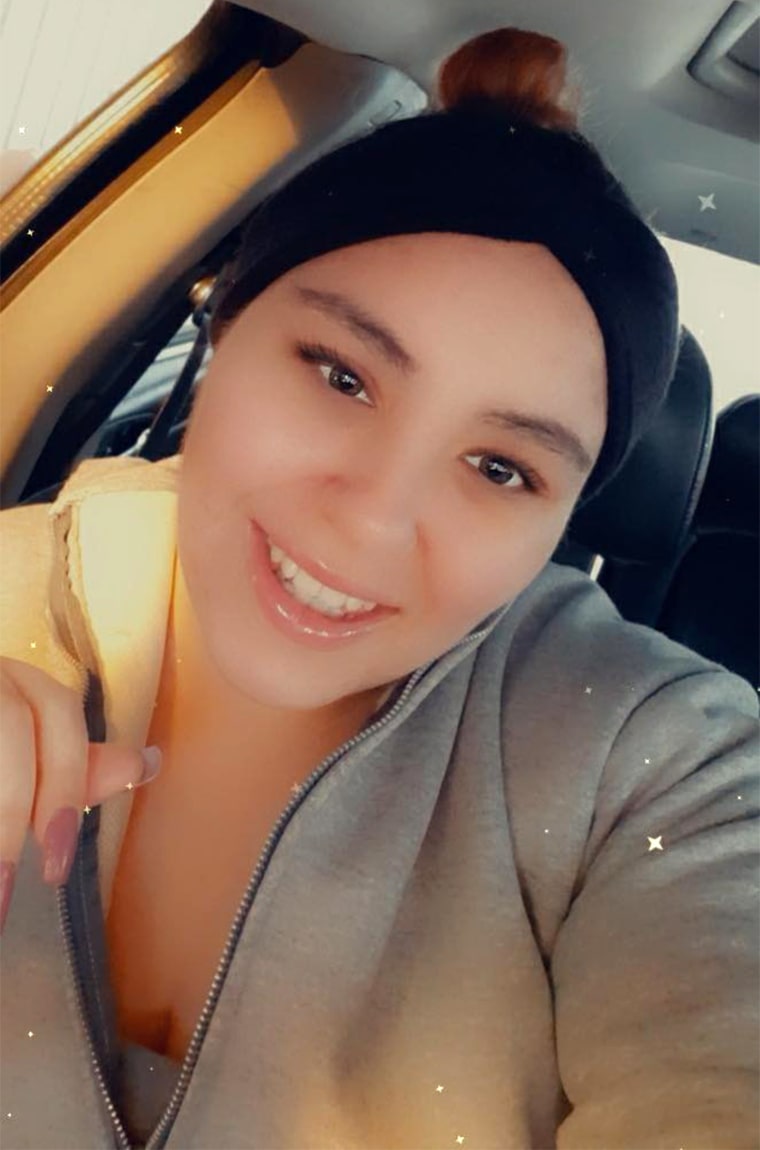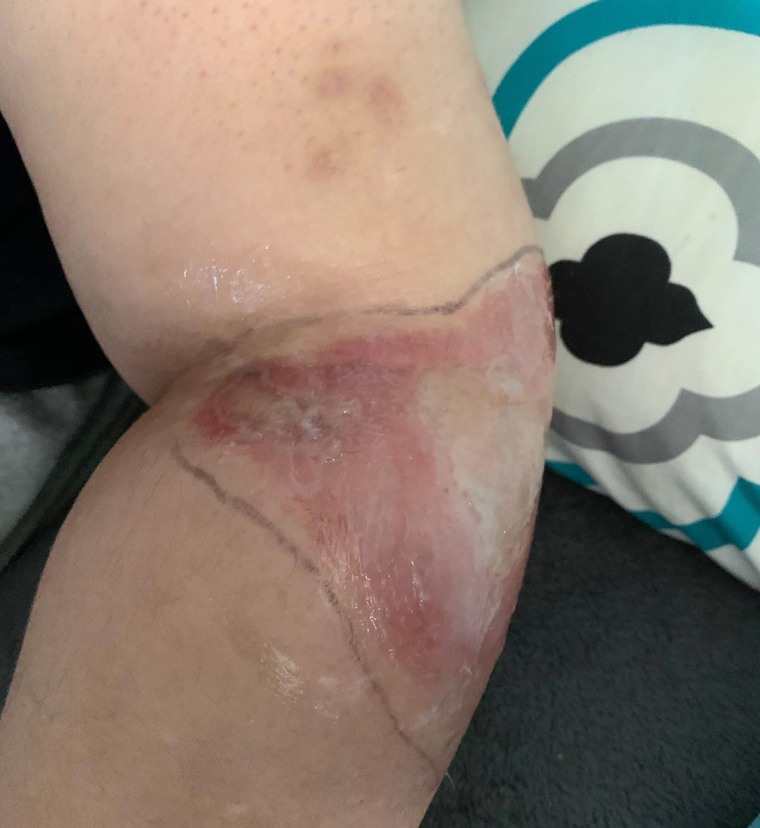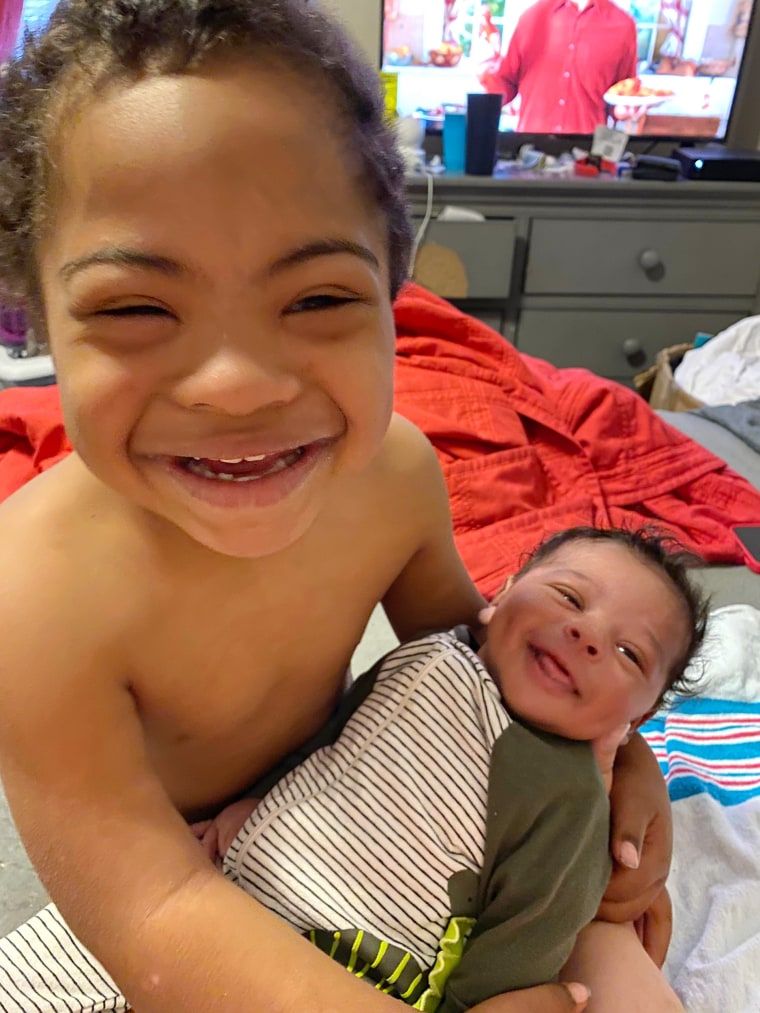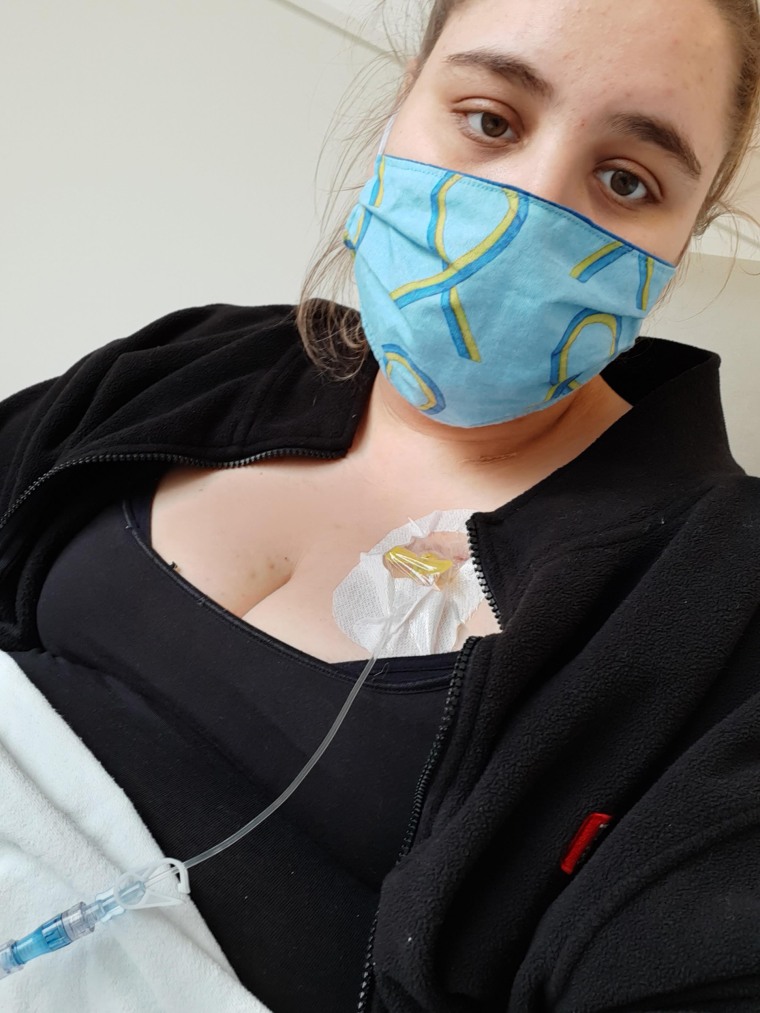When Kaylan Wilhelm’s home pregnancy test was positive, she went to the doctor to confirm it immediately. But she learned worrisome and confusing news. Wilhelm wasn’t pregnant — she had a rare cancer that causes positive pregnancy tests.
“I felt alone when I went through this because it is such a rare situation,” Wilhelm, 27, of Ravenna, Ohio, told TODAY. “If somebody going through cancer is struggling with the mental battle of it, or if somebody is dealing with a blood clot or anything like that, I want them to know they’re not alone.”
Positive pregnancy test with an unexpected result
After missing her period, Wilhelm took a pregnancy test that came back positive and visited the doctor. Her previous pregnancy was high risk and she wanted to seek care immediately.
“They said, ‘Alright it’s positive. Come back in a couple of days,’” she recalled. “I was going like every two, three days to the doctor’s to get bloodwork and (my pregnancy hormone) was rising. But then it started tripling and quadrupling.’”
When Wilhelm’s human chorionic gonadotropin (HCG) levels, aka pregnancy hormones, indicated she was five weeks pregnant, doctors performed an ultrasound to see if she was further along. But they couldn't find a baby.
“There was an empty sac,” she said. “They said come back and about two weeks. So I waited awhile but then I started bleeding, really bad.”

She visited the emergency room where she underwent another ultrasound. Again, they found no baby.
“My uterus was filled with what looked like grapes,” she said.
The emergency department doctors recommended she visit her OB-GYN and she later underwent a dilation and curettage (D&C), a procedure where a doctor removes the lining of the uterus. But she didn’t improve and started passing large blood clots.
“I did the D&C. The bleeding, the clots are still coming. They’re about the size of the palm of my hand,” Wilhelm said. “It was horrible.”
That’s when she was referred to Dr. Roberto Vargas, a gynecological oncologist at the Cleveland Clinic, who at the time worked at Cleveland Clinic Akron General.
“I was still passing a lot of clots. They did another ultrasound. My uterus was filled with even more of what looks to be like grapes and so we did another D&C,” Wilhelm said. “When they did that one Dr. Vargas was like, ‘Look we’re going to send it off for testing to see exactly what’s going on.’”
The answer was shocking — Wilhelm had stage 1 gestational trophoblastic disease, a type of cancer that occurs after an abnormal pregnancy like a molar pregnancy. It causes high HGCs, which causes positive pregnancy tests and makes it seem like someone is pregnant.
“I honestly just cried, like it can’t be true,” she said. “As much as I wasn’t trying to get pregnant, I just wanted to have another baby.”
Gestational trophoblastic disease
Molar pregnancies, which are less than 1% of pregnancies according to the March of Dimes, do not ever result in a baby.
“The placenta itself — for all intents and purposes — has gone into overdrive and it’s diving and growing rapidly by itself and then this placenta can invade and grow into the uterus,” Vargas told TODAY. “Even though they’re called pregnancies because there is an egg and a sperm they’re not going to develop into fetuses the way they would develop in a normal pregnancy.”
In some cases a sperm fertilizes an egg that has no genetic information, or in others two sperm fertilize an egg with maternal genes, but the sperm’s DNA duplicates inside.
“The placenta is really what’s going into overdrive and replicating and dividing on its own,” Varga said.
In many cases, a D&C removing the remaining tissue halts the bleeding and the person’s health improves. But in some cases, the tissue remains and continues growing.
“Once a molar pregnancy crosses over into the cancer realm and the potential for it to metastasize and go into other tissue we actually call it gestational trophoblastic neoplasia,” Vargas said.

Vargas said he performed a second D&C on Wilhelm because in 40% of cases a “repeat D&C can save people from chemotherapy.”
“But Kaylan landed on the other side of that coin and her HCGs did not respond,” Vargas said. “She had to get further treatment.”
Wilhelm underwent chemotherapy. While the first chemotherapy treatment initially lowered her HCG levels, she stopped responding to it and they had to switch her to a different chemotherapeutic drug. While receiving the second treatment, the chemotherapeutic drug infiltrated her tissue instead of going into her vein and she developed an open wound on her arm.
“It literally burned me from the inside out,” Wilhelm said. “My oncologist was like, ‘This is a rare complication we see.’”
She had to take a break from chemotherapy to have her wound treated and receive a port to continue treatment.
“It was horrible,” she said. “I have a really nasty scar though. It will never go away. I guess it’s one of my battle wounds.”
After her HCG levels returned to zero, she underwent a few more rounds of chemotherapy as a “precaution.”
“I was miserable. I was sick. I didn’t want to do it but they talked me into it,” she said. “My son helped a lot with it.”

For the next year, Vargas and her doctors wanted to test her HCG levels to make sure she’s cancer free. There’s good news with this type of cancer, though.
“We can still cure it fairly frequently,” Vargas said. “Without treatment, it can also be fatal.”
A complicated recovery
Soon after finishing chemotherapy, Wilhelm stood up and immediately fainted. She felt weak and couldn’t eat or drink anything. At first, she thought she was dehydrated and needed fluids so she visited the emergency department. But doctors wouldn’t let her leave because her health was in a precarious position.
“I had eight blood clots in both lungs and the biggest one in my left lung was getting ready to go into my main artery,” she said. “It could have caused a fatal heart attack.”
Doctors gave Wilhelm intravenous blood thinners. At times, she felt so overwhelmed by her experiences.
“The chemo infiltrating out of my vein, that was a rare side effect,” she said. “The blood clot was another rare problem. We still, to this day, don’t know exactly what caused it. I just had a rare cancer for somebody my age.”
Vargas had recommended that Wilhelm take birth control. They track the cancer’s recurrence through HCG levels and pregnancy changes that. But doctors didn’t want her to be on birth control because of the risk for more blood clots.
“That’s when our discussions turned into Dr. Dad mode,” Vargas said. “I was like, 'You absolutely cannot get pregnant.'”
Wilhelm got pregnant and Vargas felt worried.
“We don’t know if it is the chicken or the egg. We don’t know if the cancer is back or if it’s pregnancy or if we have both — we have a normal pregnancy and cancer,” he said. “It can happen … it’s incredibly rare.”

What’s more, research indicates that people who have molar pregnancy and receive chemotherapy are at a greater risk of having a stillbirth.
“She also then had a blood clot that was relatively recent and she also had pretty bad lung disease,” Vargas said. “She had many reasons that made her pregnancy higher risk. One concern was that the cancer was back and we were going to miss it.”
But she delivered a healthy baby boy, Ja’Shon Moss, who joined older brother, Donivan Wilhelm. It’s been more than a year since her cancer so she’s considered cancer free, but she still struggles some days.
“I’m weaker than I was before cancer. My lungs are not as good as they were,” she said. “I still push. I work. I take care of the kids. I do what every other mom does.”
